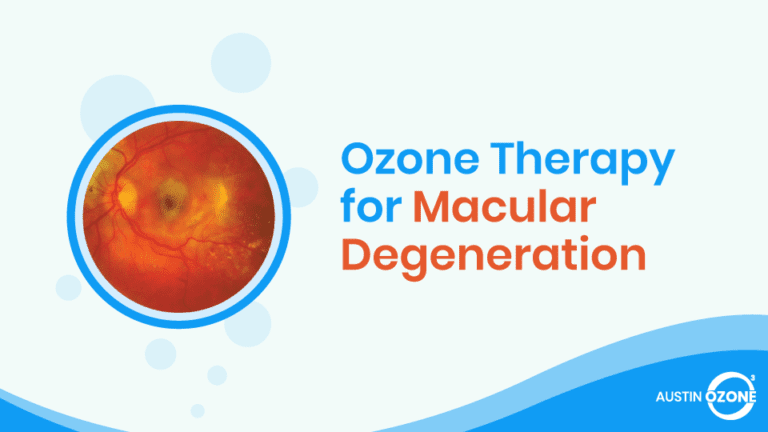Macular degeneration2 is an incurable eye disease characterized by the deterioration of the retina’s macula (the central portion), which is responsible for controlling the eye’s central vision.
The macula is responsible for a person’s ability to read, drive, and recognize faces or details. Its degeneration is almost always age-related. Although it leads to the loss of central vision, it rarely leads to total blindness.
An Overview of Macular Degeneration
The macula is considered the most sensitive part of the eye. It is also a very small structure – only around 500 micrometers in thickness.
Despite its size, the macula houses the photoreceptors – structures that are responsible for your visual acuity. As you age, the structure disintegrates and leaves a deleterious effect on your eye.
When working properly, the macula can capture detailed images and send them up to your optic nerve for interpretation.
With macular degeneration, the images you perceive are received incorrectly, resulting in a blurry or wavy vision. As the condition worsens, your central vision will be completely lost.
With macular degeneration, the images you perceive are received incorrectly, resulting in a blurry or wavy vision. As the condition worsens, your central vision will be completely lost.
Macular degeneration develops very slowly. Those at high risk are people aged 50 and above. Even those who develop macular degeneration early in life will not experience a sudden onset of symptoms.
This disease can develop in either one or both eyes.
What Causes Macular Degeneration?
Macular degeneration is strongly associated with aging, although there is evidence2 suggesting its link to genetics, which means macular degeneration can be hereditary.
Aside from advancing age, gender and race also seem to be a factor in the development of this disease. According to statistics, women are more likely to have it than men. Furthermore, Caucasians have a higher risk of developing this disease compared to any other race.
Lastly, environmental factors also play a role in the development of macular degeneration. The American Academy of Ophthalmology2 notes that smoking increases the chances of acquiring it. A diet that is high in saturated fat and a sedentary lifestyle also increase the risk of developing the disease.
What Are the Symptoms of Macular Degeneration?
The early symptoms of macular degeneration are characterized by a distorted or fuzzy vision, including seeing shadows in your central vision. As the disease progresses, the blurry area gets bigger and you start seeing blank spots.
Additional symptoms include a difficulty seeing details under poor lighting conditions and a sensitivity to glare.
Unfortunately, not many people notice the symptoms of macular degeneration, especially if it affects only one eye. This is why people are almost always too late in treating the disease.
What Are the Stages of Macular Degeneration?
Macular degeneration happens in three stages. Most people have no idea they have the disease since the onset of the symptoms are almost always gradual and barely noticeable. During this time, it is highly important for patients to get their eyes checked for the presence of yellow-colored deposits underneath the retina.
The next stage of macular degeneration already involves some vision loss, although still not noticeable enough to cause alarm. An eye exam will reveal either larger deposits or a pigment change in the retina.
The last stage of macular degeneration involves a complete loss of the central vision. However, if this happens only in one eye, you might not be able to notice any changes in your vision.
Late stage macular degeneration in one eye puts the other eye at a higher risk of developing it, too.
Can Macular Degeneration Be Prevented?
You can reduce the risk of developing macular degeneration by making healthier choices. For example, if you are a smoker, quitting will greatly help you avoid it.
Maintaining a normal range of cholesterol level and regulating your blood pressure also helps in preventing the onset of macular degeneration and its symptoms. This can be done by eating plenty of vegetables and doing physical activities like jogging, running, yoga, and engaging in physical sports.
Early detection is also key in preventing macular degeneration from progressing. An annual eye examination is required, particularly if you are aged 65 or older.
Types of Macular Degeneration
There are two types of macular degeneration: wet and dry.
Wet Macular Degeneration
Also known as exudative macular degeneration, the wet type occurs when the retina develops abnormal blood vessels that keep leaking either fluid or blood at the back of the retina. This causes scarring on the macula, making it faster for a person to lose their vision.
While wet macular degeneration is rare, it can still happen.
Dry Macular Degeneration
Dry macular degeneration is the more common form of this disease and affects approximately 90% of patients2. It is caused by the accumulation of protein in the macula, which then leads to the malfunctioning of the retina.
Unlike wet macular degeneration, the loss of vision in the dry type is gradual and slower.
What Are the Common Treatments for Macular Degeneration?
There is no cure for macular degeneration. However, there are treatments that can slow down its progression.
The treatment wholly depends on the type of macular degeneration you have and at what stage it is.
For dry macular degeneration, taking nutritional supplements like antioxidant vitamins can reduce the chances of it progressing from dry to wet macular degeneration.
However, if you have wet macular degeneration, the treatment is mainly focused on stopping the abnormal growth of blood vessels and preventing them from leaking fluid into the retina.
Wet macular degeneration treatment involves the direct injection of medication to the affected eye. This is followed by medical and laser treatments.
Wet macular degeneration treatment involves the direct injection of medication to the affected eye. This is followed by medical and laser treatments.
If your macular degeneration is at its intermediate stage, taking supplements like vitamins and minerals may help keep it from getting worse. In addition, there are low-vision devices that you can use to help you see.
Schedule an Ozone Therapy Session Today!
What Is Ozone Therapy?
Ozone therapy is an alternative medical treatment that administers medical ozone into the human body to treat a disease. The therapeutic benefits of medical ozone have been widely studied4 for decades; however, more clinical studies are needed to verify its efficacy.
Medical ozone is a colorless gaseous substance that is produced by running pure oxygen through an ozone generator. In some countries, ozone is used for its powerful disinfecting and oxidizing properties. Some research also suggests that medical ozone works by stimulating the immune system, thereby strengthening it.
There are many ways to administer medical ozone in the body. The most popular method is through autohemotherapy. This works by getting a small sample of the patient’s blood and ozonating it before infusing it back into the patient’s bloodstream.
Other methods of ozone therapy include insufflation or the pumping of ozone gas into the body’s crevices (ears, nose, rectum, vagina), direct injection, and topical application.
Ozone Therapy for Macular Degeneration
Since ozone therapy is being extensively studied as a possible treatment for a number of diseases, it comes as no surprise that it is also being considered as a viable treatment1 for macular degeneration.
A study3 conducted in Cuba showed surprisingly positive results when patients suffering from dry macular degeneration underwent ozone therapy. The patients reported having better visual acuity after six months of receiving between 1,500 and 2,000 micrograms of medical ozone per session – administered through autohemotherapy.
The patients reported having better visual acuity after six months of receiving between 1,500 and 2,000 micrograms of medical ozone per session – administered through autohemotherapy.
While further studies and clinical trials are needed to confirm the efficacy of ozone therapy in regressing and curing macular degeneration, the results of the few existing studies are still very promising.
Summary
Macular degeneration is a debilitating and incurable disease that affects the older generation. It is caused by abnormalities in the macula or the central part of the eye. While suffering from it will not make you completely blind, the loss of your central vision is still highly inconvenient.
There are two types of macular degeneration – wet and dry. Between the two, dry macular degeneration is more common. It is usually treated by taking antioxidants to stop the disease from progressing further.
Meanwhile, wet macular degeneration is considered a medical emergency, as blindness is almost guaranteed when you have this type of disease.
The treatment for both wet and dry macular degeneration are mainly focused on stopping its progression to the loss of vision.
The treatment for both wet and dry macular degeneration are mainly focused on stopping its progression to the loss of vision.
However, a recent study in Cuba3 has shown that ozone therapy may reverse the effects of macular degeneration. Patients who participated in the trial exhibited improved visual acuity when tested after six months of undergoing ozone therapy.
In this regard, it is worth trying ozone therapy as a possible treatment for macular degeneration. The procedure is less invasive and is chemically safer than the available medical treatments.
Schedule an Appointment Today
References
- Alt Medicines. (2018, October 30). TREATING MACULAR DEGENERATION WITH OZONE THERAPY. Retrieved from http://altmediciness.com/treating-macular-degeneration-with-ozone-therapy/
- Boyd, K. (2020, February 28). Age-related macular degeneration. Retrieved from https://www.aao.org/eye-health/diseases/amd-macular-degeneration
- Estrabao, R., Gonzalez, G., Aguilera, P., Perez, A., & Trujillo, H. (2019). Effectiveness of ozone therapy in age-related macular degeneration (dry). Medical Scientific Mail, 23(4)
- Healing the Eye. (2018, January 23). Treating chronic eye disease using ozone. Retrieved from https://www.healingtheeye.com/chronic-eye-disease-ozone-treatment






